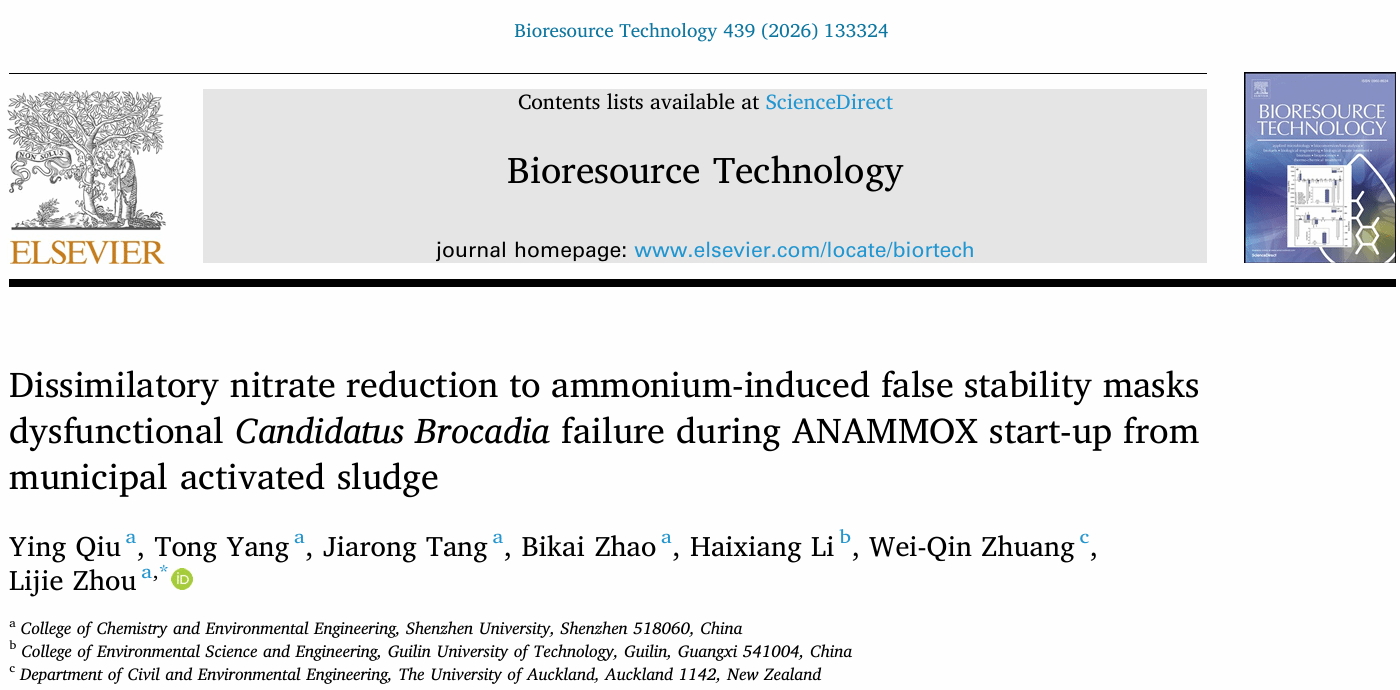Recently, the research team led by Associate Professor Lijie Zhou from the College of Chemistry and Environmental Engineering at Shenzhen University published a paper in Bioresource Technology (CAS JCR Q1) entitled “Dissimilatory nitrate reduction to ammonium-induced false stability masks dysfunctional Candidatus Brocadia failure during ANAMMOX start-up from municipal activated sludge.” Associate Professor Zhou serves as the sole corresponding author, and Master’s student Ying Qiu is the first author. Shenzhen University is designated as both the first-author affiliation and the corresponding institution.

Anaerobic ammonium oxidation (ANAMMOX), known for its low energy consumption and low carbon emissions, has been regarded as a promising next-generation nitrogen removal technology in wastewater treatment. However, direct start-up of ANAMMOX processes using municipal sludge often faces instability and even failure. Most existing studies have focused on successful cases, leading to a “survivor bias” in the literature, while the microbial mechanisms underlying start-up failures remain poorly understood. In this study, the team constructed a laboratory-scale ANAMMOX-anaerobic membrane bioreactor (AnMBR) seeded with sludge from the Songgang municipal wastewater treatment plant in Shenzhen. Through long-term operation, combined with metagenomic sequencing and enzymatic analysis, the start-up process was systematically investigated. Results showed that although the reactor initially exhibited high nitrogen removal efficiency, performance declined sharply after day 70. Further analysis revealed that DNRA functional bacteria temporarily maintained apparent stability in the early stage by regenerating NH₄⁺ and NO₂⁻, masking the dysfunction of Candidatus Brocadia. However, prolonged DNRA dominance disrupted substrate balance, caused biomass decline, and led to excessive accumulation of SMP and EPS, ultimately resulting in ANAMMOX failure. The study further proposed that monitoring the abundances and enzymatic activities of nrfA (DNRA marker gene) and hzs (ANAMMOX marker gene) could serve as early-warning indicators for DNRA dominance, providing valuable references for reactor regulation. This finding not only deepens the understanding of ANAMMOX failure mechanisms but also offers new insights for the engineering application of municipal wastewater nitrogen removal.

Original link: https://doi.org/10.1016/j.biortech.2025.133324
